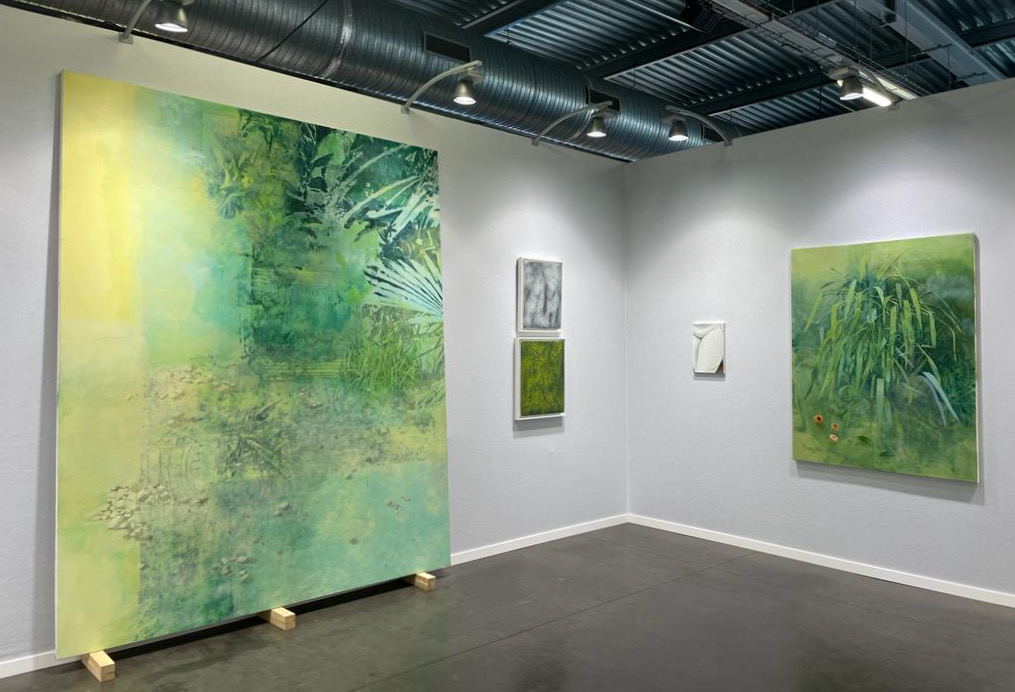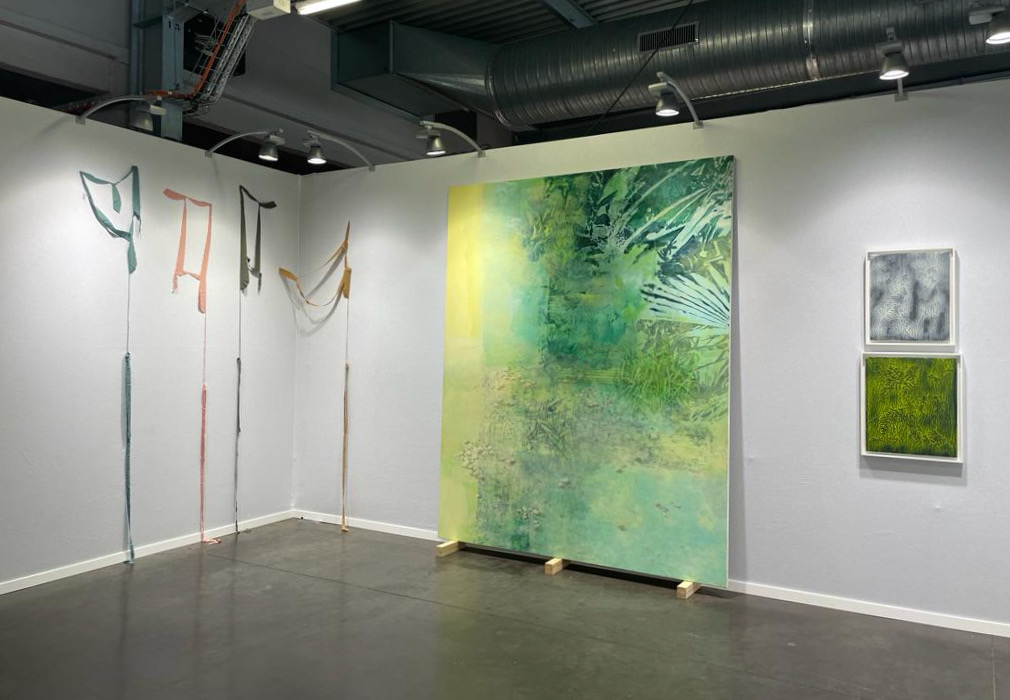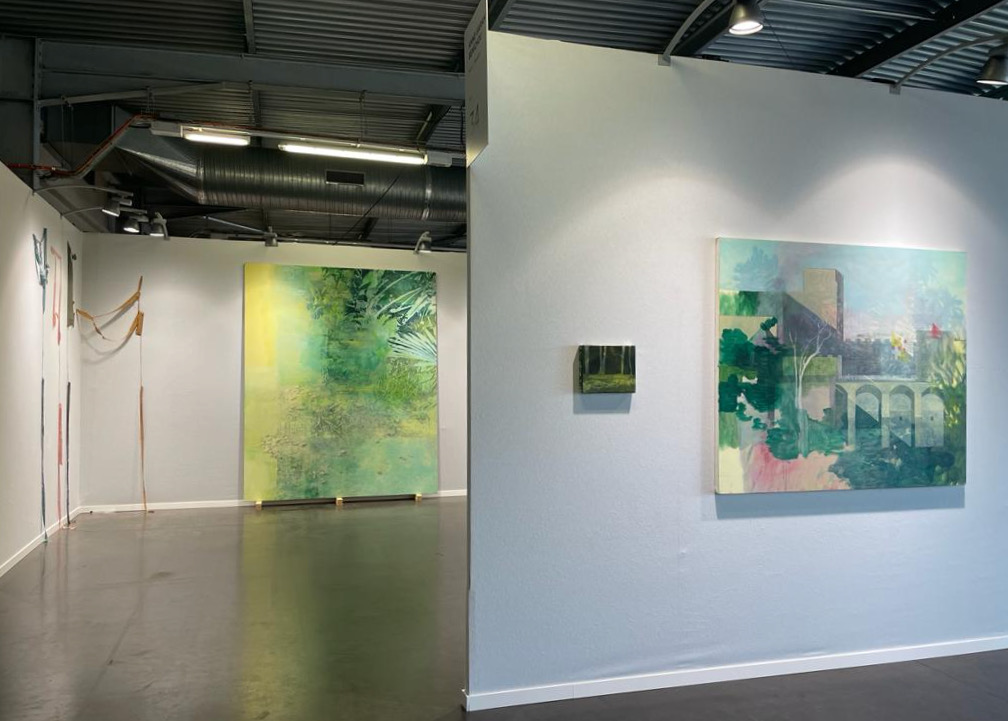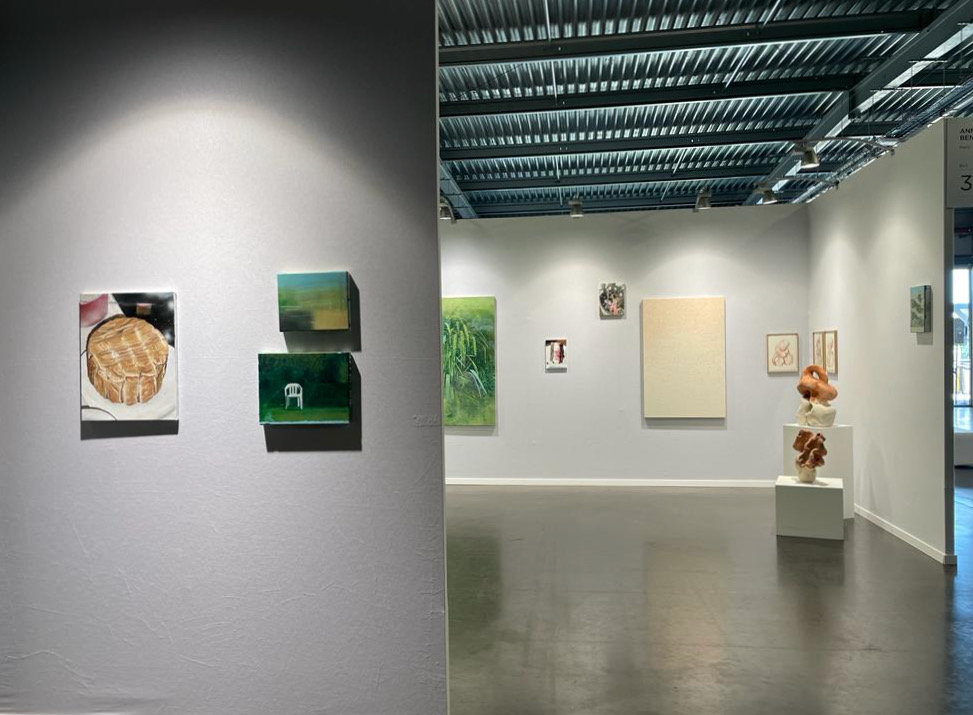BAD + Bordeaux 2022
Stand R+1 34
Hangar 14, Quai des Chartrons, Bordeaux
7 - 10th July 2022

4 parts - 300 x 320 cm (approximatly) various dimensions
©Noah Stolz
Flowers remain a very rare subject in Marion Baruch's work because she does not particularly like their bucolic pattern. Originally, La vitesse des fleurs was supposed to depict kites. However, the artist was not convinced by this idea. When she hung them on the wall, she discovered that these shapes behaved like flowers with an ephemeral and ethereal aspect. The title accentuates the fleeting aspect of these plants, by including the notions of fragility and life, growth and evolution.

35 x 27 cm
Titled, dated and signed at the back
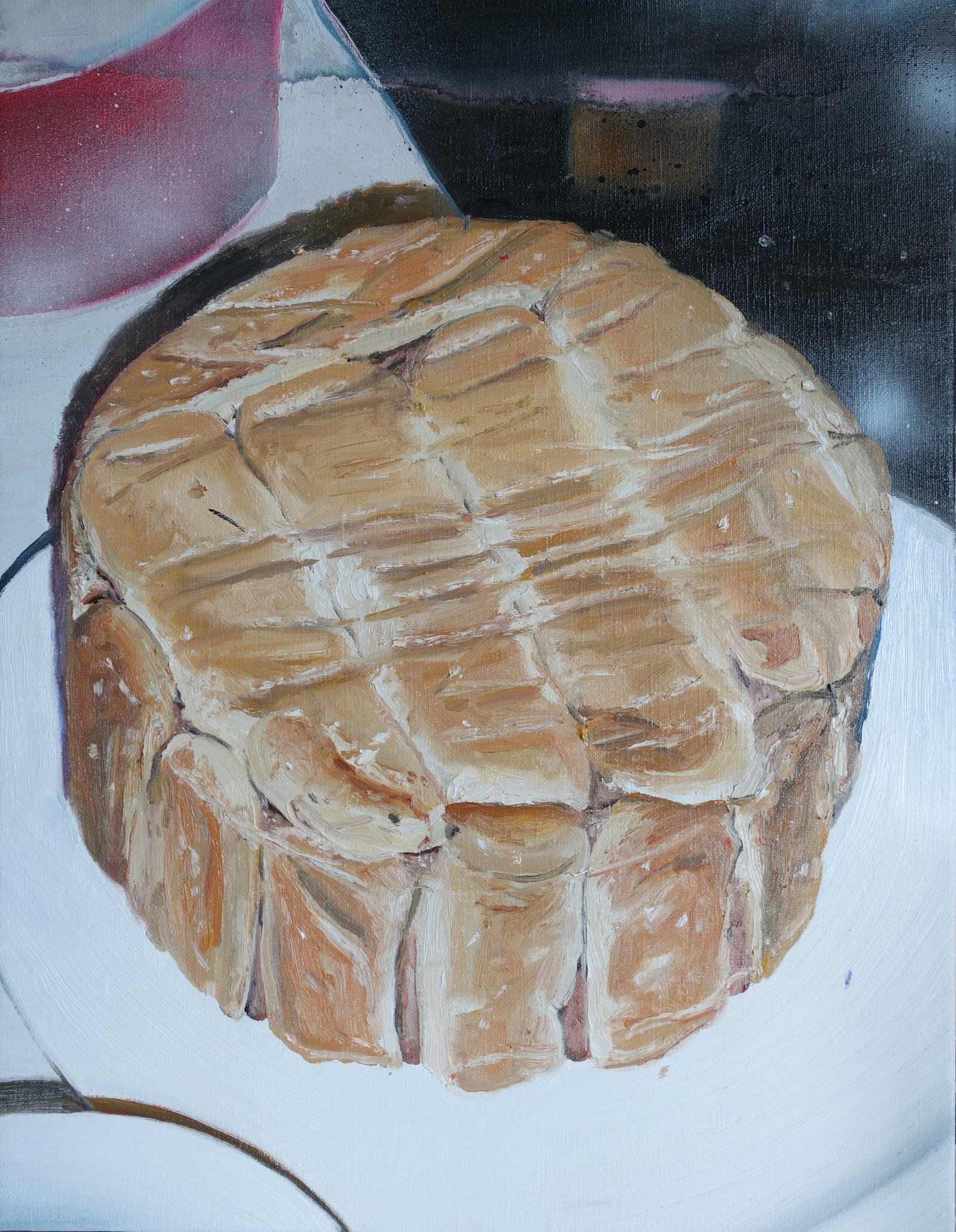
50 x 38 cm
Titled, dated, signed on the back
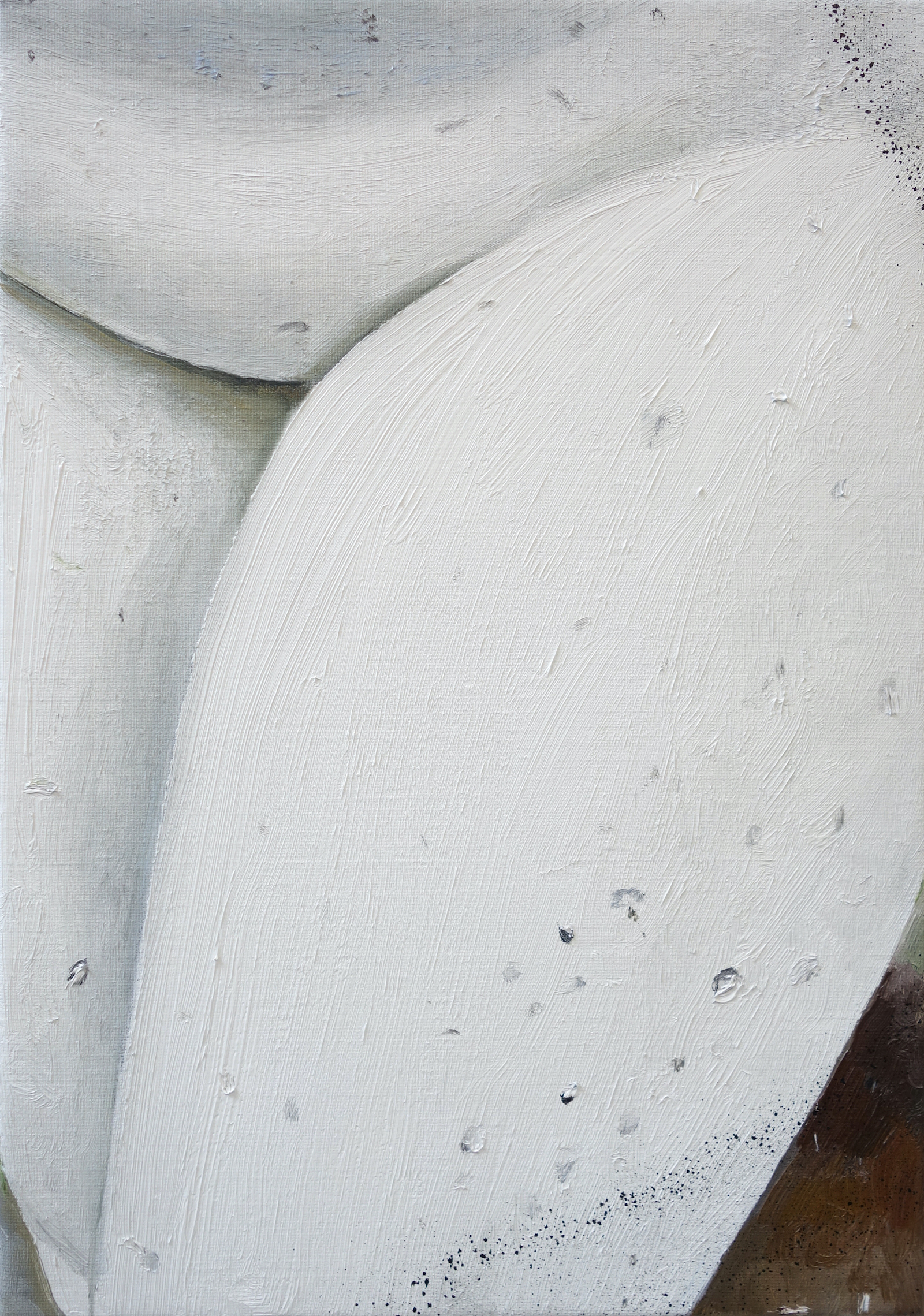
38 x 27 cm
Signed, titled, dated on the back

32 x 23 cm
Titled, dated, signed on the back
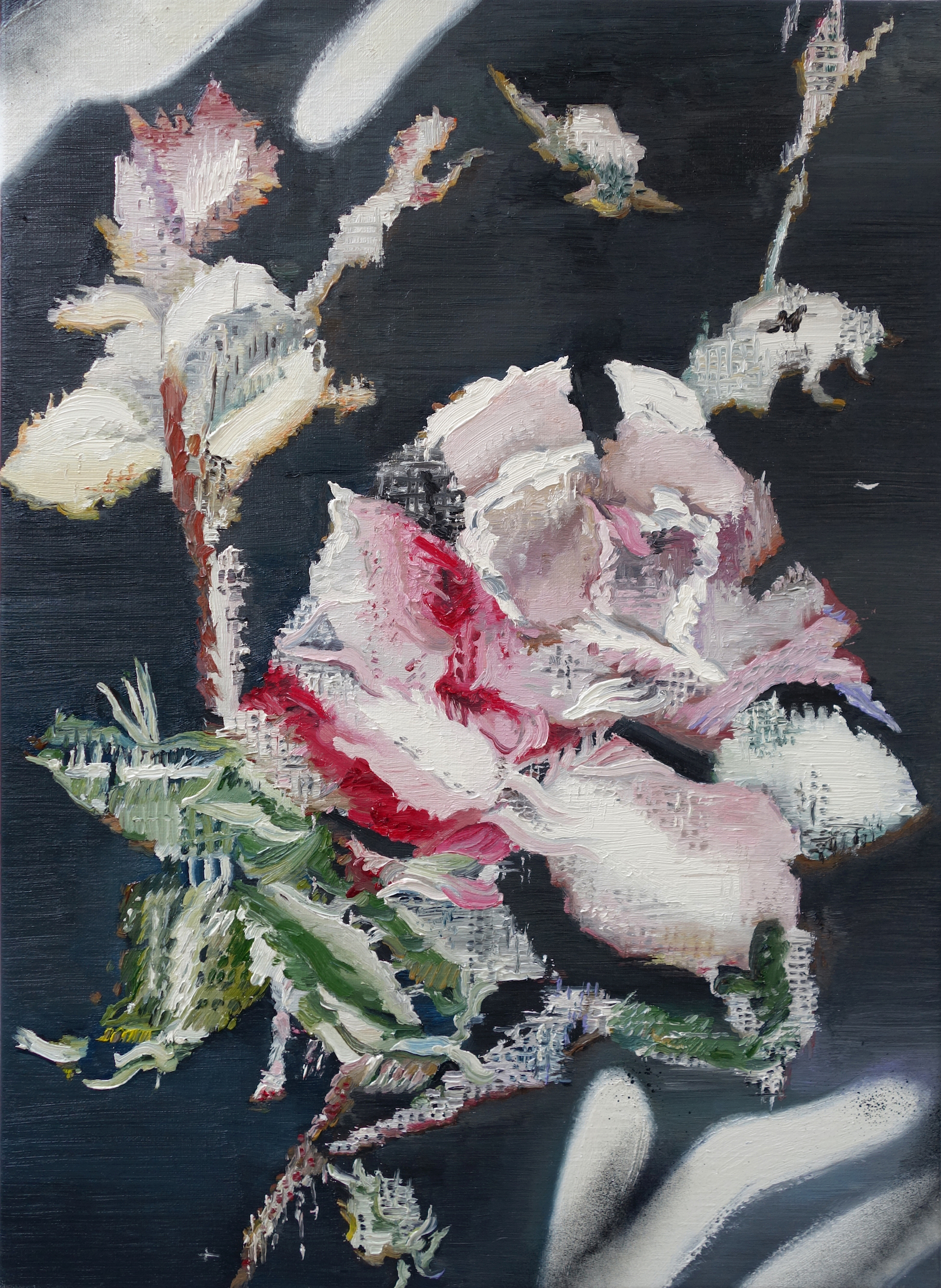
23,6 x 17,3 in.
Titled, dated, signed on the back (upper right)
In Fleur 1, Mireille Blanc expresses a particular interest in the flower pattern and transforms it in an indirect manner. From the back of canvas representing a rose, she skews all the more the image, and highlights this work of transformations in her painting. In this way, the artist conceives an artwork pointing a new reality, with the presence of black and white traces which blur the primary subject.
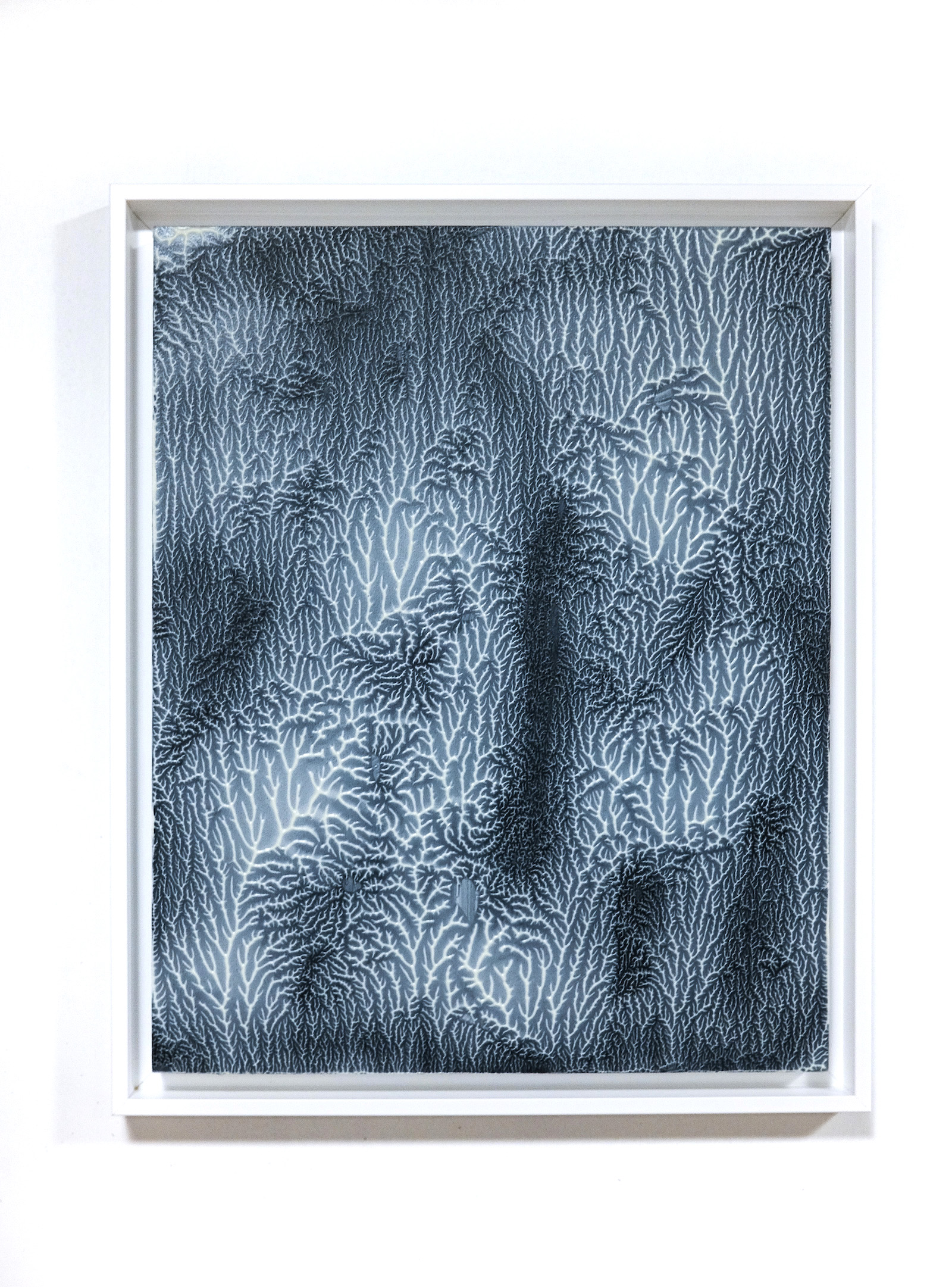
50 x 40 cm
The serie Aftertouch is a continuation of Julien Discrit's work on self-generated forms. The artist uses a process of molding and imprinting, which, by contact, allows him to obtain random forms. These arborescences, or "dendrites", recall forms discernible in many natural phenomena such as neural networks, veins, plants... or geographical as in erosion and hydrographic networks. Motifs already present in other series of the artist such as the États inversés and Mille Mississippi.
The title Aftertouch evokes the imprinting process used, and also refers to sound, more precisely to electronic keyboards and synthesizers, the "aftertouch" being an effect that plays on the sensitivity of expression of the key of a keyboard to create a variation of note.
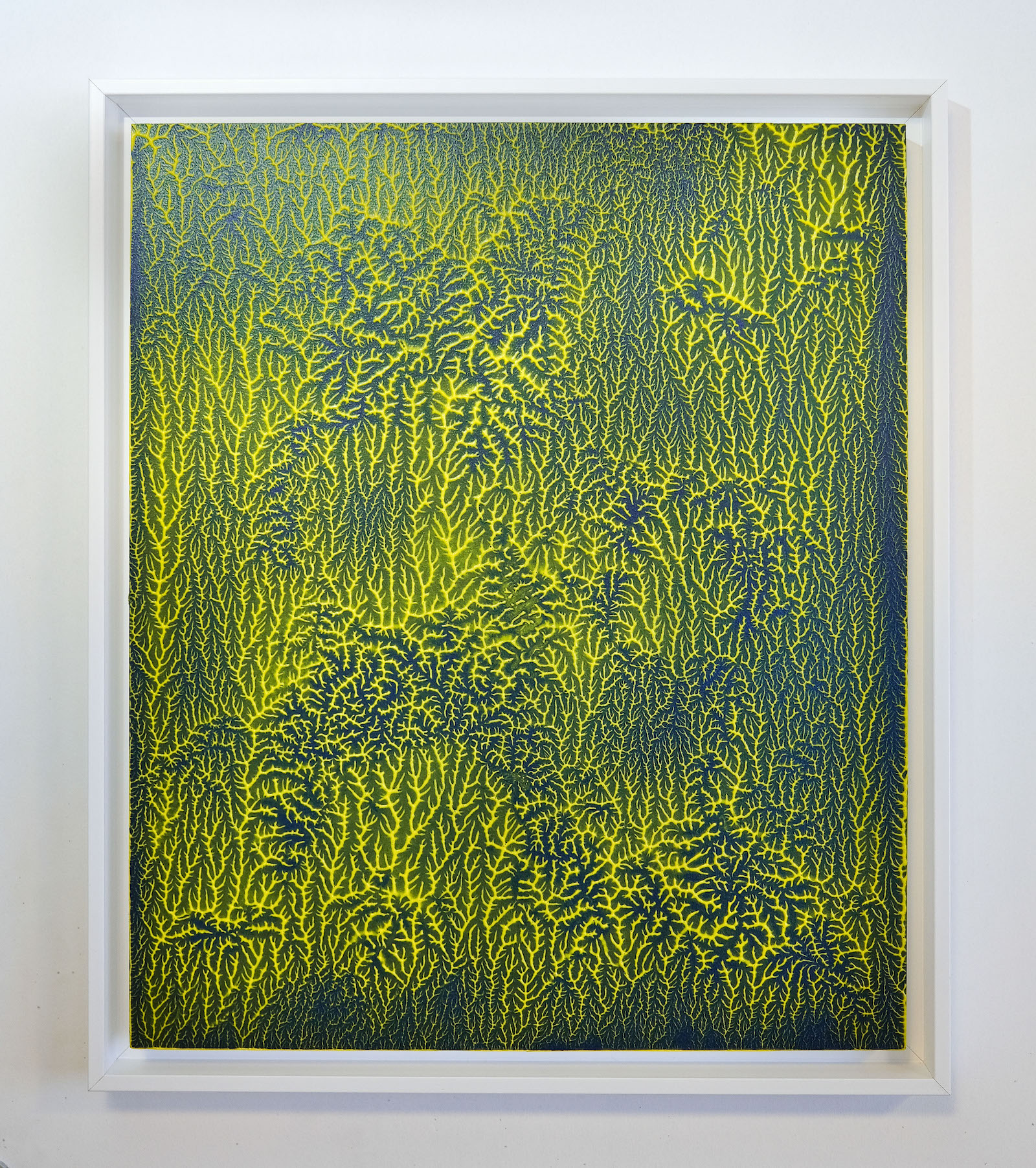
55 x 46 cm
The serie Aftertouch is a continuation of Julien Discrit's work on self-generated forms. The artist uses a process of molding and imprinting, which, by contact, allows him to obtain random forms. These arborescences, or "dendrites", recall forms discernible in many physical and natural phenomena such as neural networks, veins, plants... or geographical as in erosion and hydrographic networks. Motifs already present in other series of the artist such as the États inversés and Mille Mississippi.
The title Aftertouch evokes the imprinting process used, since the forms are self-generated after contact, and also refers to sound, more precisely to electronic keyboards and synthesizers, the "aftertouch" being an effect that plays on the sensitivity of expression of the key of a keyboard to create a variation of note.

Reconstituted stone, rock
4 x 5,9 x 5,1 inch
With these series of sculptures, Julien Discrit develops research where the materials and forms are intimately intertwined. He pursues two reflections very important in his work: one on the minerals, crystals and stones, and another on the spatial, geological and temporal relationship between humankind and its environment. Like future fossils, these sculptures of human hands holding rocks represent an almost archaic gesture of gripping. In a snapshot, they propose a "becoming stone" that plays with both materials - organic and mineral mixed together in yet another piece made of reconstituted stone - but also with artistic and historical practices in the sense of inventing a contemporary aesthetic from an artificial archaeological ruin. It thus reveals the aesthetic forms already given in our environment like these stones which are in themselves finished sculptural forms.
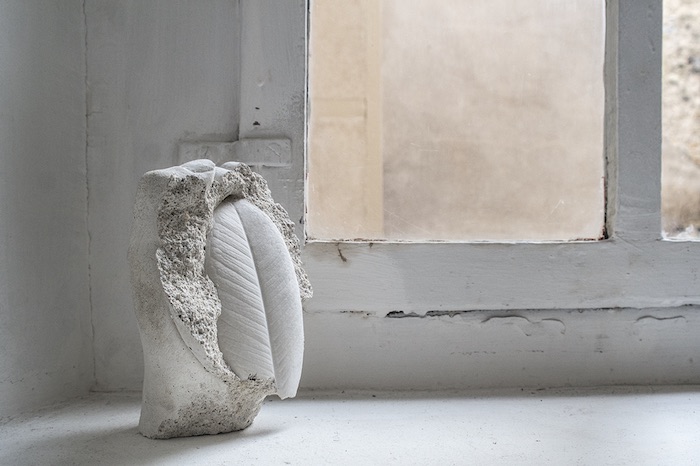
reconstituted stone
12 x 10 x 13 cm
©Augustin Dupuid
With these series of sculptures, Julien Discrit develops research where the materials and forms are intimately intertwined. He pursues two reflections very important in his work: one on the minerals, crystals and stones, and another on the spatial, geological and temporal relationship between humankind and its environment. Like future fossils, these sculptures of human hands holding rocks represent an almost archaic gesture of gripping. In a snapshot, they propose a "becoming stone" that plays with both materials - organic and mineral mixed together in yet another piece made of reconstituted stone - but also with artistic and historical practices in the sense of inventing a contemporary aesthetic from an artificial archaeological ruin. It thus reveals the aesthetic forms already given in our environment like these stones which are in themselves finished sculptural forms.
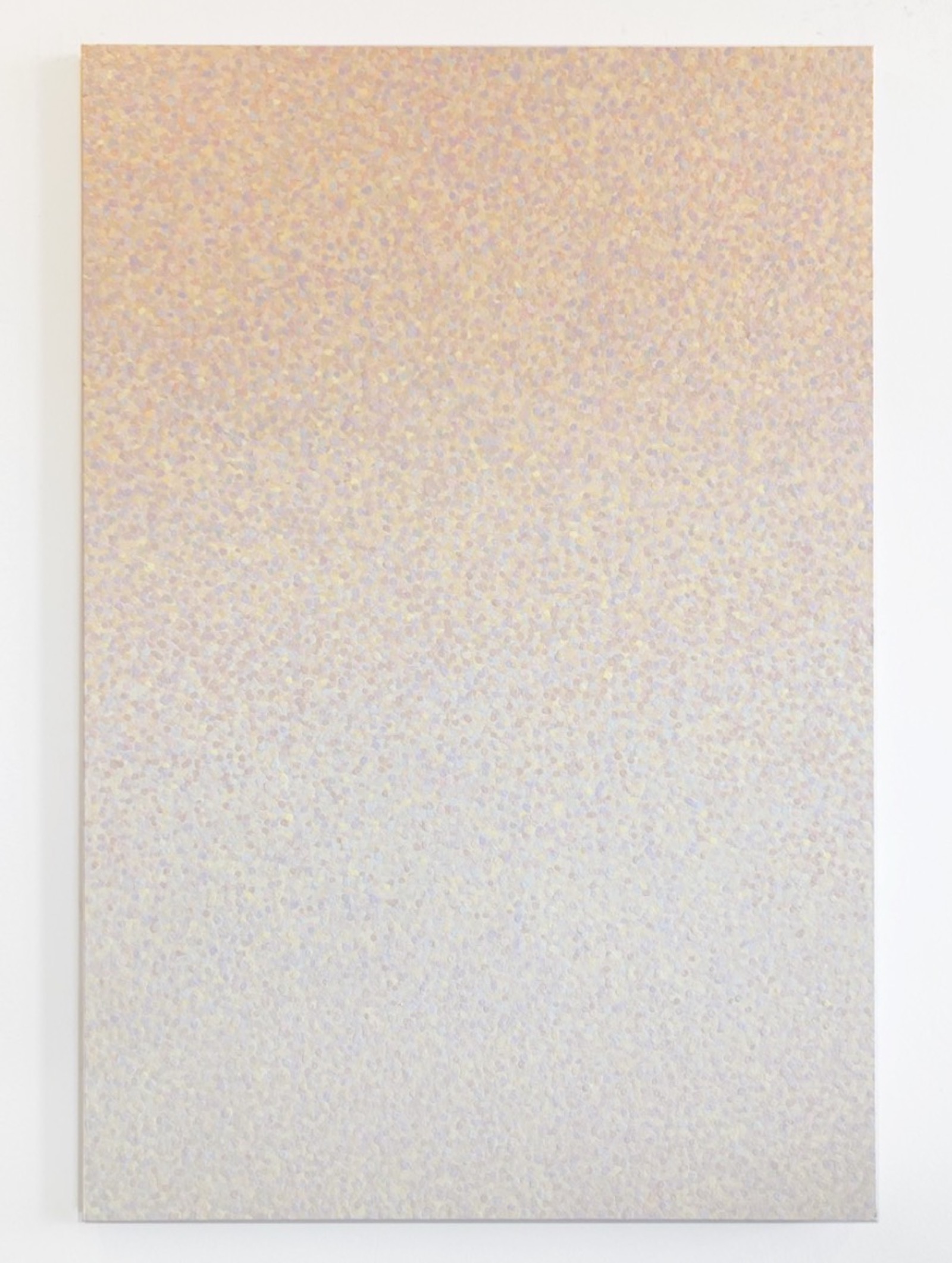
Acrylic ink on cotton canvas
130 x 85 cm
Signed, titled, dated at the back
The Composantes spectrales (spectral components) series follows from on the previous artist's research on the light's diffraction using coloured dots. Cyrielle Gulascy evolves in her work of light representing. In this series, the scale of each dot is widened to emphasize on the propagation phenomenon. It allows to show even more all the colors that the eyes cannot see naturally.

125 x 150 cm
Dated, titled and signed on the back
© Nicolas Brasseur
Dans cette série, Yann Lacroix dépeint un univers ancestral, rêvé et fantasmé, d'où surgissent des silhouettes fantomatiques de chevaliers et de forteresses entourés de végétation. Ils deviennent autant de motifs historiques d'un temps révolu, ressuscités par une réinterprétation de la peinture d'histoire en proie à l'onirisme et l'imaginaire.

146 x 114 cm
Titled, dated, signed at the back
From his memories (images gleaned from the Internet, trips abroad, daily environment...), Yann Lacroix paints deliberately composite landscapes, inhabited by exotic vegetation, tropical greenhouses and swimming pools, made up of their own artificiality and empty of human presence but whose traces of a past or possible history bring sensuality and life: a reflection on heterotopias that is articulated through these places that are both phantasmagoriated and borrowed from the poetry of everyday life like allegories in the painting itself.

32 x 24 cm
signed, titled, dated at the back

8,6 x 10,6 inch
Titled, signed and dated at the back
À partir de ses souvenirs (images glanées sur Internet, séjours à l'étranger, environnement quotidien…), Yann Lacroix peint des paysages volontairement composites, habités de végétation exotique, de serres tropicales et de piscines, constitués de leur propre artificialité et vides de présence humaine mais dont la trace d'une histoire passée ou possible amène sensualité et vie : une réflexion sur les hétérotopies qui s'articule par le biais de ces lieux à la fois fantasmés et emprunts d'une poésie du quotidien comme des allégories de la peinture même.

8,6 x 10,6 inch
Titled, signed and dated at the back
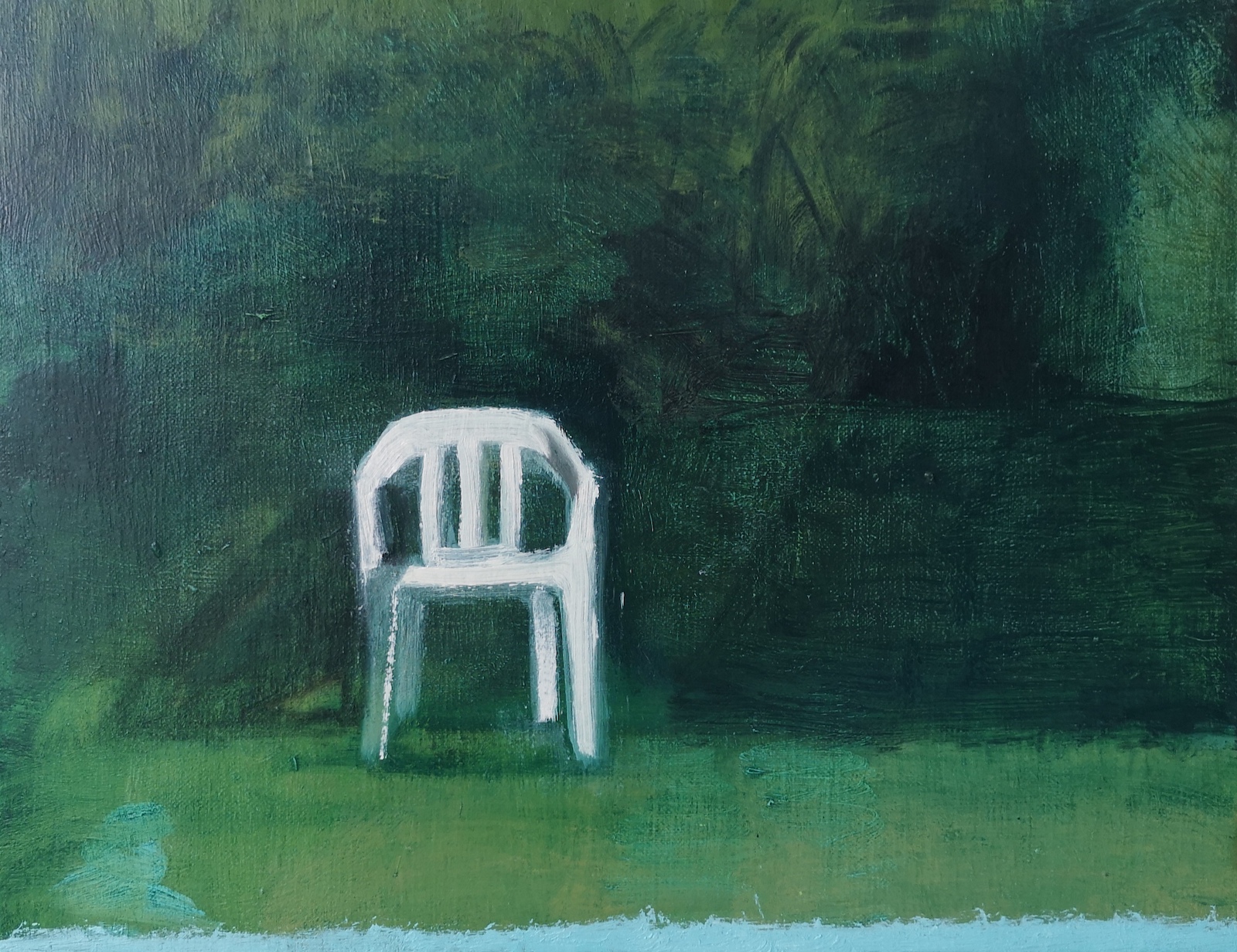
27 x 35 cm
Dated, titled and signed on the back
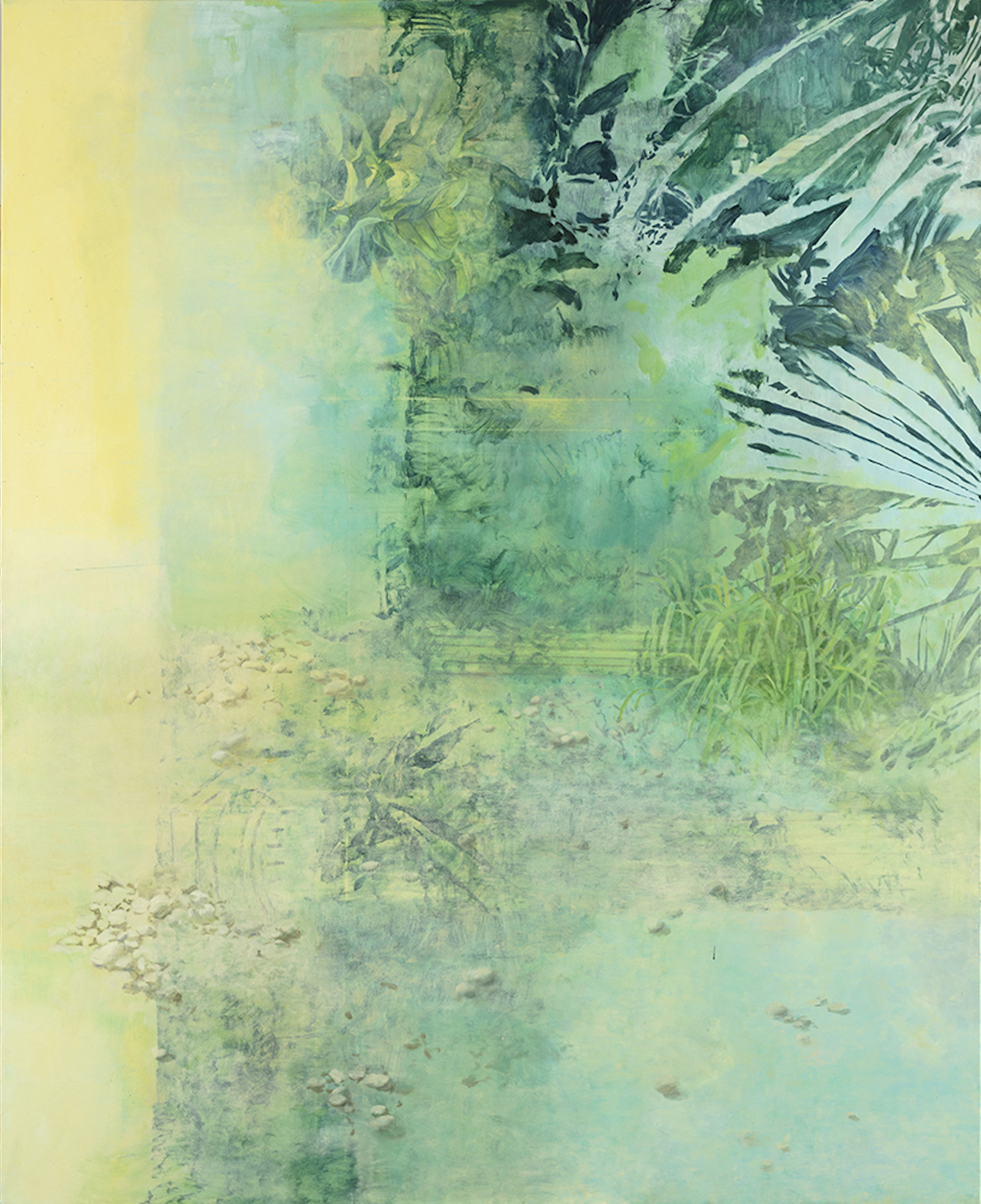
270 x 220 cm
From his memories (images gleaned from the Internet, trips abroad, daily environment...), Yann Lacroix paints deliberately composite landscapes, inhabited by exotic vegetation, tropical greenhouses and swimming pools, made up of their own artificiality and empty of human presence but whose traces of a past or possible history bring sensuality and life: a reflection on heterotopias that is articulated through these places that are both phantasmagoriated and borrowed from the poetry of everyday life like allegories in the painting itself.

42 x 40 x 25 cm
Peau de terre fait partie d'une série de faïences qui s'inspire de la symbolique du pot en Inde. Matrices à la teinte diaprée, les "peaux" de terre de Juliette Minchin pourraient rendre hommage aux ancêtres. Les plis et sillons des membranes d'argile qui s'affaissent évoquent un changement d'état. Comme la mue rosée d'un organisme animal, ces peaux laiteuses contiennent le souvenir d'une forme passée dont l'aspect évoque des êtres au stade embryonnaire. Les orifices nous invitent à deviner l'intérieur du corps, le contenant de la structure. En Inde, dans un rite de fertilité nommé "La danse des pots", le pot représente la femme et le monde aquatique. Chez les Sora, le pot d'argile devient "pot-esprit": pour rendre hommage aux divinités, il est constamment rechargé en liquide et nourriture, et ainsi habité le temps du rituel.
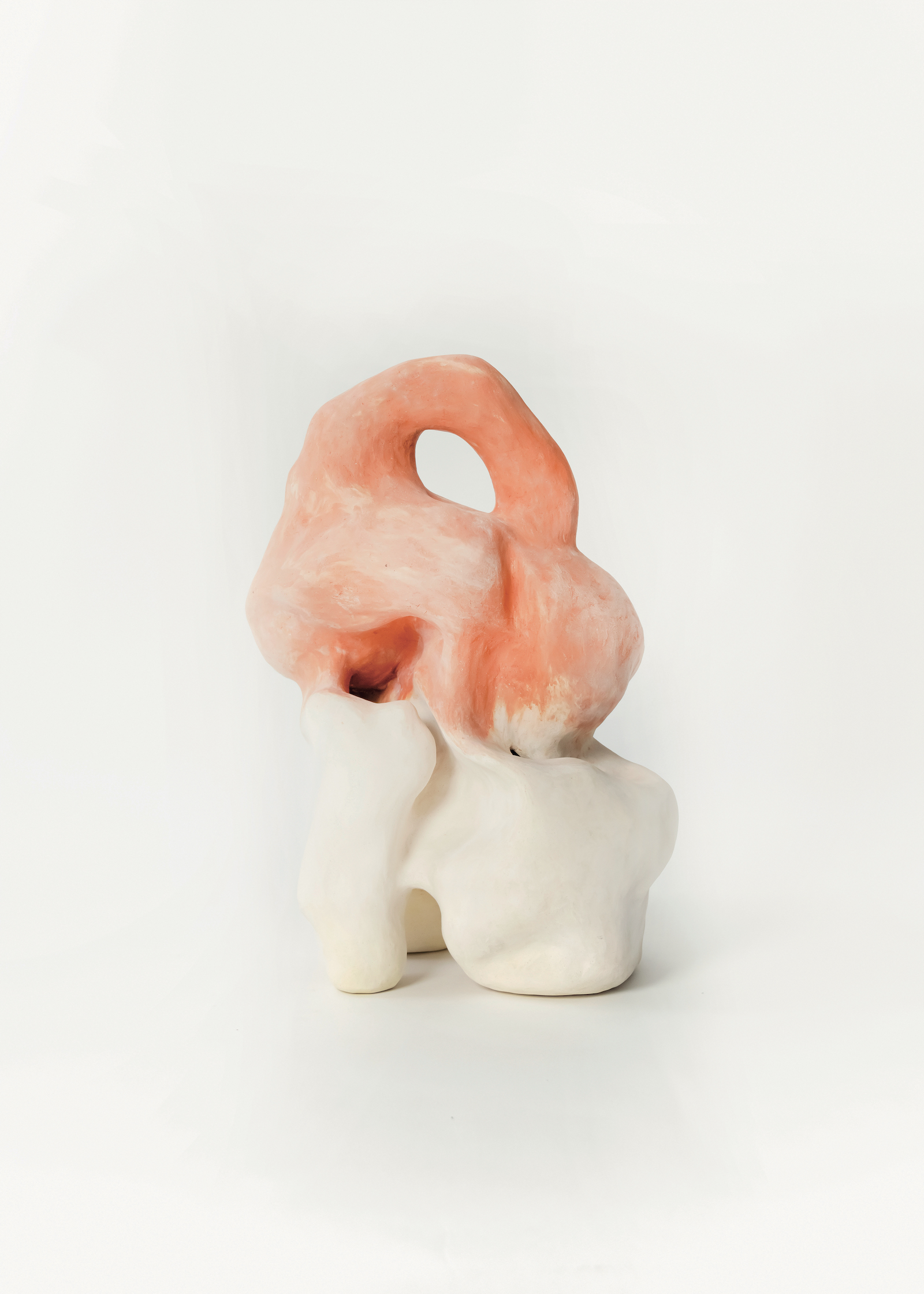
56 x 43 x 35 cm
©Bonjour Garçon
Peau de terre fait partie d'une série de faïences qui s'inspire de la symbolique du pot en Inde. Matrices à la teinte diaprée, les "peaux" de terre de Juliette Minchin pourraient rendre hommage aux ancêtres. Les plis et sillons des membranes d'argile qui s'affaissent évoquent un changement d'état. Comme la mue rosée d'un organisme animal, ces peaux laiteuses contiennent le souvenir d'une forme passée dont l'aspect évoque des êtres au stade embryonnaire. Les orifices nous invitent à deviner l'intérieur du corps, le contenant de la structure. En Inde, dans un rite de fertilité nommé "La danse des pots", le pot représente la femme et le monde aquatique. Chez les Sora, le pot d'argile devient "pot-esprit": pour rendre hommage aux divinités, il est constamment rechargé en liquide et nourriture, et ainsi habité le temps du rituel.

38 x 28 cm

38 x 28 cm
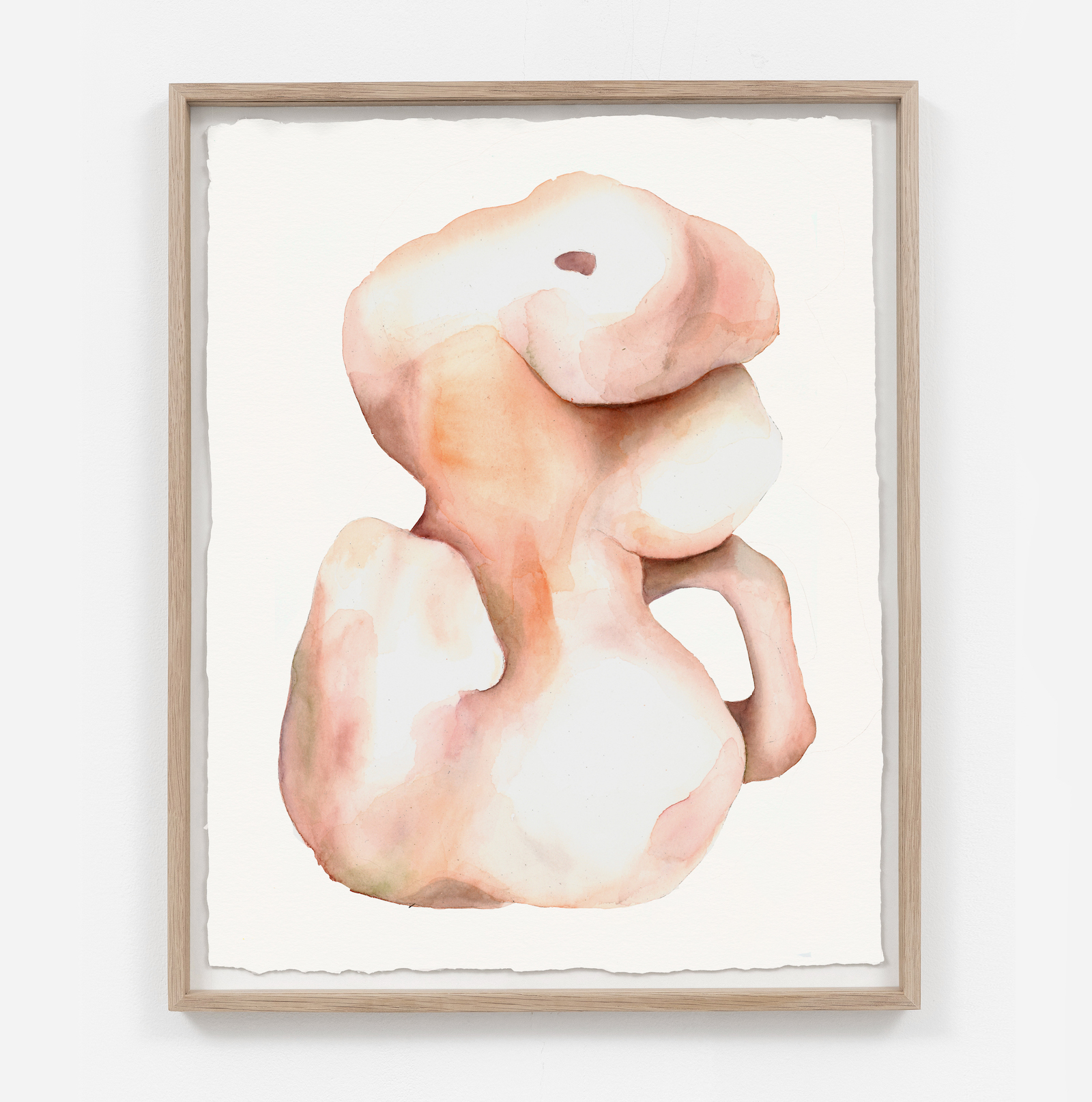
38 x 28 cm

Paper: 34,4 x 50,6 cm (each)
Seton Smith a réalisé cette série de photographies dans l'Ohio à Hopewell, un lieu historique dans lequel se trouvent des tumulus vestiges de la tribu Indienne Adena. Subsistent aujourd'hui de cet ancien site spirituel et funéraire des formes sculpturales qui émergent du paysage. Fonctionnant en série sous forme de diptyques, de triptyque ou d'une image seule, ces photographies, où les lignes et l'horizon servant de repères, permettent à Seton Smith d'évoquer subtilement la mémoire et sa confrontation en tant qu'artiste à la fragilité des civilisations et à l'évanescence de notre passage sur terre.



